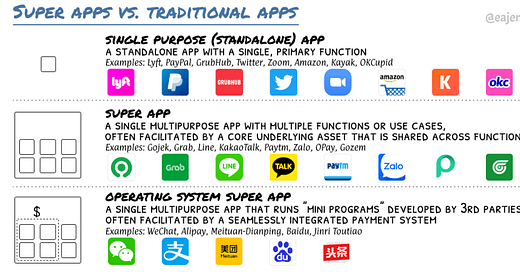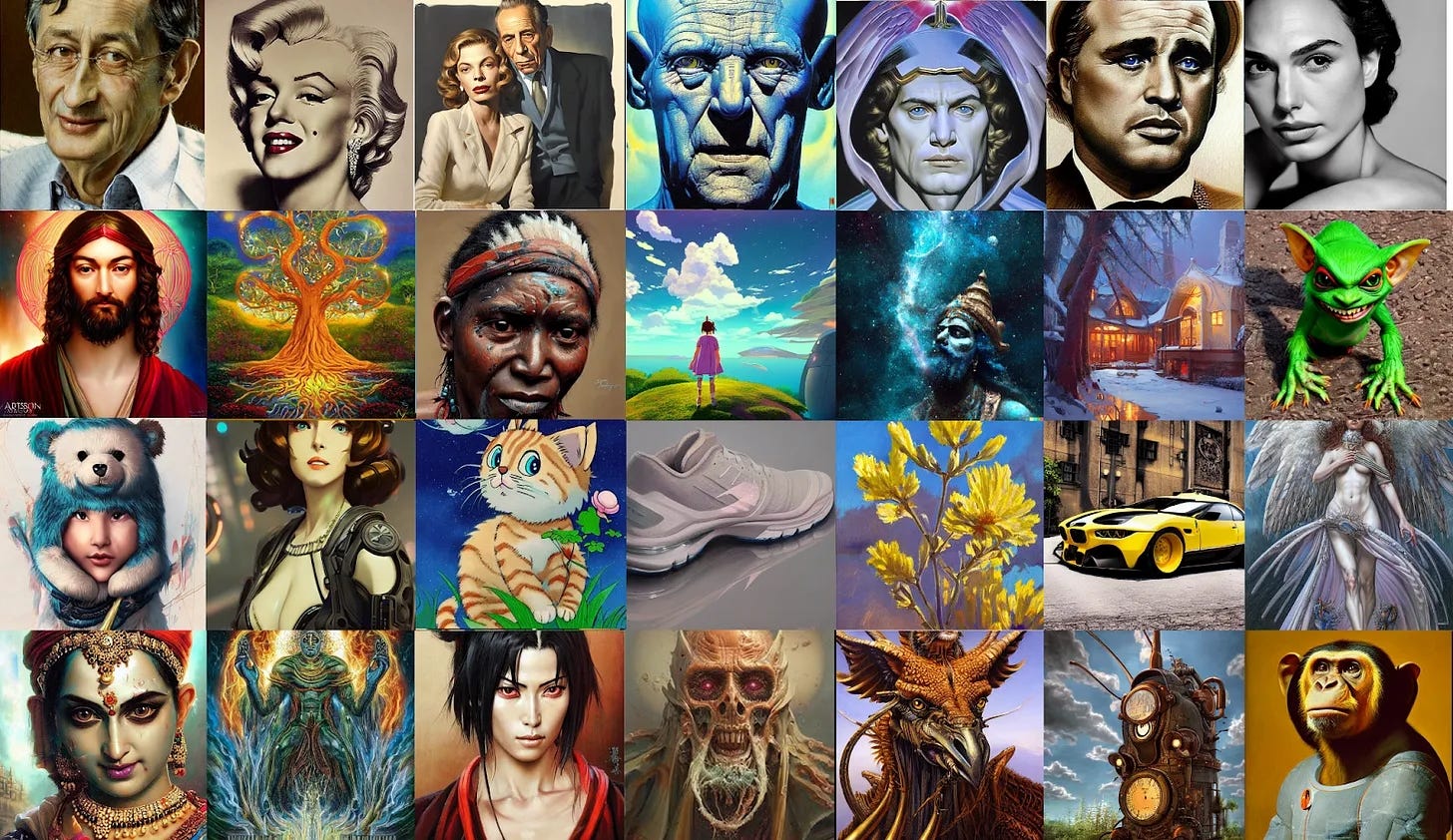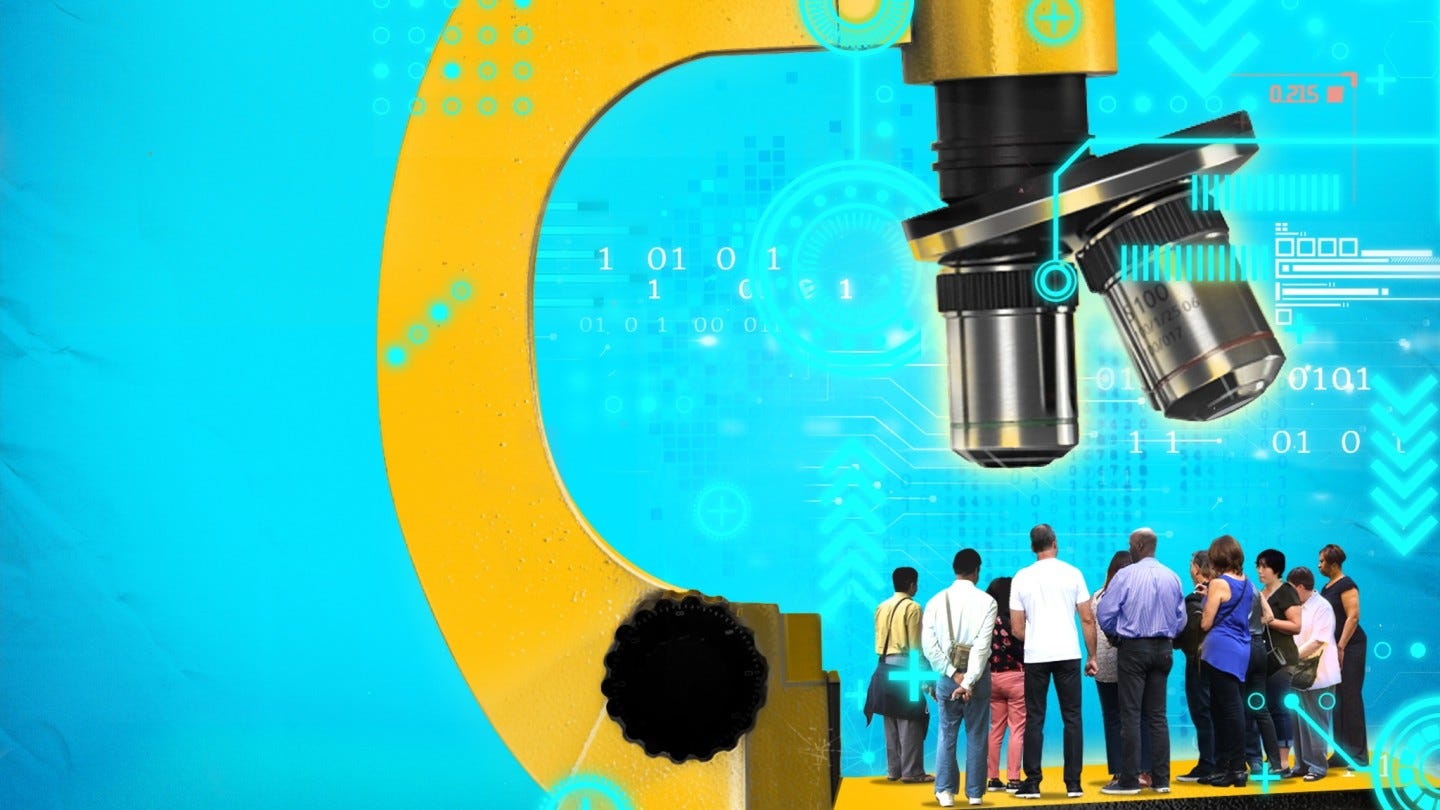The Thread Briefing: SuperApps, the Cambrian explosion in AI content creation and when data is not enough
Welcome to the latest issue of The Thread Briefing, a round-up of the smartest things we’ve ingested recently, summaries of key trends, insights and a snapshot of what we’ve been up to in London, Hong Kong and beyond.
Coming up this week…SuperApps, machine learning goes visual, better decision-making and getting real on the green transition.
SuperApps will not save you.
Many big businesses gaze longingly at the SuperApps of Asia, with their huge reach and diversified revenue streams. But they miss how much culture and context drives their success, how important it is to really nail an initial value proposition and how critical it is to leverage a unique underlying asset that is shared across functions. This article does a great job of explaining how SuperApps succeed and why Africa may be the next continent to develop them.
Visualisation we’re loving:
A Cambrian explosion in text-to-image AI
This year we’ve seen a number of text-to-image AI engines launch in quick succession. DALL-E launch in January, followed by DALL-E 2 in April, before being closely followed by Midjourney, whose Discord server now boasts 2m users. If you’ve not come across this tech yet, they are AI engines that have been trained on a dataset of billions of images online and are able to create completely new images based on written descriptions (or ‘prompts’) by users.
This 2min primer by DALL-E 2 does a good job explaining the basics…
However in August Stable Diffusion launched and (unlike DALL-E or Midjourney) publicly released all the details of its model, effectively creating an open source text-to-image generator. This approach means there is a rapidly growing community of developers and users taking the technology in new directions, but it also means it can be used to create images that the likes of DALL-E 2 don’t allow, such as violent imagery, pornography and celebrity deepfakes.
As if that wasn’t enough progress for one year, only last week Meta announced Make-a-Video, a text-to-video AI, then later that day researchers at Google announced Dream Fusion, a text-to-3D model. Expect to see a LOT more development as this technology rapidly improves and VC / Big Tech money floods into the market.

So what’s the killer use case?
It’s too early to tell the what the killer app, or businesses, that will be built off the back of these leaps in technology, just as no-one predicted smartphones would lead to Uber or TikTok. However, in the very short term, shareholders in stock imagery companies are probably very nervous right now, whilst it’s easy to see how important these leaps in machine learning are for those trying to bring about immersive worlds and virtual reality platforms.
As Ben Thompson wrote earlier this year…
“Imagine environments that are not drawn by artists but rather created by AI: this not only increases the possibilities, but crucially, decreases the costs….This is how the economics of the metaverse will ultimately make sense: virtual worlds needs virtual content created at virtually zero cost, fully customizable to the individual.”
YouTube doubles down on learning and education.
Will education be YouTube’s killer use case? As TikTok continues to dominate short-form content, and streaming companies take up more and more of our free time, maybe the future of YouTube lies in learning.
This month YouTube announced “YouTube Player for Education”, a set of features and products designed to make it easier to find educational content, easier to focus and study, and easier to sell your courses. This means a new embedded YouTube player that shows content on commonly used education apps without distractions like ads, external links or recommendations, but from next year ‘qualified creators can also begin offering free or paid Courses to provide in-depth, structured learning experiences for viewers’ as well as quizzes next to their videos to quickly test understanding.
In the battle for students in the growing online education space against the likes of specialist educators like Khan Academy and Code Academy it will come down to whether YouTube can deliver innovation faster than the specialists can get distribution. Our money is on the Goliath rather than the Davids of the world.
If you needed more evidence that YouTube is fast becoming an education platform, see the trend in ‘study along with me videos’, designed to help remote workers and students avoid procrastination and create virtual study groups. This three hour video of Scottish data science ‘Merve’ silently studying in Glasgow has been viewed 10m times!
Decision-making: when data is not enough
This was an excellent article in the FT about the role of human judgement in decision-making. While it focused on how this is evident in sports as big teams rely more on moneyball-esque analytics and insights, it is absolutely relevant for those of us helping large companies innovate and respond to seemingly incessant new threats and competitors. Swap the word ‘sport' for ‘business’ and the passage below is just as true.
Yes, sports is in the midst of a data revolution, and you’d be insane not to seek better information to inform decisions. But rather than using data instead of human intelligence, the challenge is using data in tandem with the human dimension. And here decisions in sport reflect decisions in life. “What the data says” is too often a convenient way of passing the buck. Better to come out in plain sight: it’s a judgement.
Businesses aren’t walking the walk when it comes to sustainability
Patagonia rightly got the plaudits recently for making ‘the earth it’s only shareholder’. However, according to this article by the Economist, they are an extreme outlier and most big corporations are just talking the talk. Drastically changing corporate behaviours regarding sustainability will not just require clever nudges of customers but big shoves of businesses.
Quote we’re worried about:
“More than two-thirds of the world’s 166 biggest greenhouse-gas emitters have promised to reach net zero by 2050 or sooner. But less than a fifth have medium-term targets; a similarly low share have set out quantified decarbonisation strategies.”
And finally…
This past fortnight we’ve been gearing up for a new project on supply chain innovation and welcoming our new Design Lead, Jacob. You’ll hear more about both supply chains and Jacob in future briefings! In the meantime, if you’d like to discuss how we approach product, service and business innovation at Thread, please don’t hesitate to get in touch.








